Researchers and scientists are now utilizing the digital melting point apparatus for unprecedented precision in measuring the melting point of various substances. If you’re in a pharmaceutical or chemistry teaching, or even in QC, comprehending how this machine works will enhance your analyses and experiments. In this post, we will explain the primary functions, advantages, and applications of digital melting point apparatusso as to help you achieve more in your tasks. Let us explore the technology, the application-based indoors behind this very important modern laboratory tool.
How Does a Melting Point Apparatus Measure Temperature?
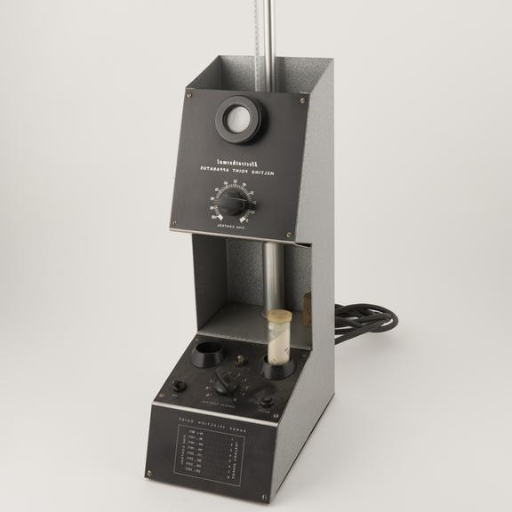
A melting point apparatus measures temperature by gradually heating a substance and observing its solid-to-liquid transition. This device leverages precision thermometers or sensors to log the specific temperature at which the phase transition happens. This temperature of transition, known as the melting point, is crucial for determining the identity and purity of a substance.
Interpreting the Temperature Range
A melting point range is an essential factor in determining a substance’s purity and composition. While using a melting point apparatus, the temperature range is normally marked by two boundary conditions: the onset of melting—the temperature where softening initiates—and the complete melting point, defined as the temperature where total liquefaction is achieved for the sample. For an experimental sample containing pure compounds, this range is usually very narrow, and is often 1-2°C. Impure substances, on the other hand, show greater variability in the melting point range because the contaminants that are introduced tend to interfere with the materials’ uniform crystalline structure.
Currently, modern melting point apparatuses measure temperature with high resolution and an accuracy within ±0.1°C. This precision is essential in the pharmaceutical, chemical, and research industries. For example, highly pure organic compounds such as benzoic acid have a melting point of approximately 122°C and salicylic acid at approximately 159°C. Any measurable deviation from these temperatures signifies incomplete synthesis or contamination. Advanced equipment that ensures dependable analysis and scrutiny in measuring minute differences is essential for quality assurance, control and, in processes involving product and process development.
The Role of the Capillary Tube in Melting Point Determination
The capillary tube is important in the mechanical determination of melting point as it holds the sample while the sample is being heated. During the measurement, to ensure accuracy, the sample need to be finely powedered and then put tightly into the capillary tube as uneven packing leads to unreliable measurement. With the advanced modern melting point apparatuses, which have digital displays, it is now possible to measure melting temperatures with great accuracy of up to even ±0.1°C.
An example would be the METTLER TOLEDO MP90 which allows for up to 3 samples to be analyzed at once, featuring programmable heating rates for orderly melting. Recently, more sophisticated automated melting point devices with image capturing systems have come into the market. With these new systems, users can monitor the entire melting process and see exactly when the sample begins to melt.
Also, with modern real time data analysis which is often synced to software that documents data for compliance and audit purposes, the accuracy and reproducibility of readings have been enhanced significantly. Furthermore, detailed audits of compliance documentations can be made easily on demand thus providing more reliable standards for companies.
This blend of new technologies and real time data alongside more traditional techniques boosts the effectiveness of experiments, all while removing human error, making this perfect for laboratories dealing with mass sample testing such as in the pharmaceutical industry where quality control is crucial.
Impact of Heating Rate on Measurement
The impact of heating rate on measurement includes effects on reaction kinetics, thermal stability, degradation temperatures, energy absorption, and overall sample behavior.
| Key Point | Description |
|---|---|
| Reaction Kinetics | Faster heating may alter reaction speed. |
| Thermal Stability | Rapid heating can reduce stability limits. |
| Degradation Temp | Can shift depending on heating rate. |
| Energy Absorption | Varies with the intensity of heating. |
| Sample Behavior | Influences phase and structural changes. |
What Are the Key Features of a Digital Melting Point Apparatus?
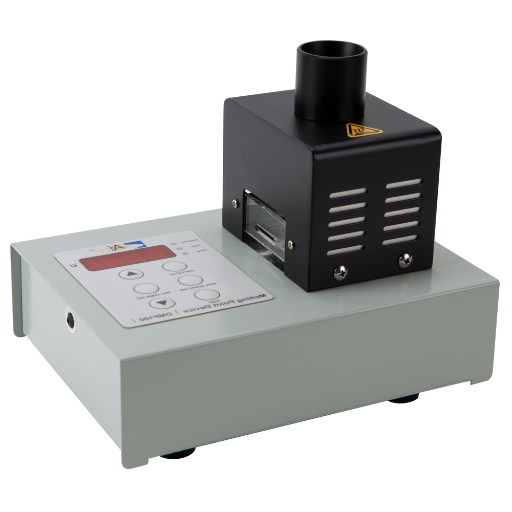
A digital approach for melting point determination yields exact and consistent results when assessing the melting point of a particular substance. Key benefits are improvement of temperature accuracy through digital readouts, automation of the heating process and User Error Loss Prevention systems that reduce user error. Thermostatic systems of this sort are usually meant to increase ease and uniformity within the laboratory, which makes them necessary for the control and research work.
The Importance of Digital Display
Using a digital display with a melting point apparatus increases accuracy and therefore good laboratory practice. As is known, digital temperature measuring tools presents temperatures digitally without any form of estimation therefore real time temperature reading displays instantaneous updates. This feature eliminates guess work, presenting and measuring temperature removes discrepancies that come with using a thermometer with scale divisions engraved on its glass stem(arithmetic progression). Accuracy always matters, especially when you need to set your equipment within certain tolerances. Modern digital melting point apparatus seem to have achieved the use temperature accuracy of +/- 0.1 degree Celsius as compared to traditional methods backwards.
In addition, being able to capture and track temperature changes through a digital interface ensures repeatability in the experiments performed. Many sophisticated devices even offer data logging, which allows researchers to record and analyze results more effectively and prepare detailed reports. Studies suggest that human error is easily mitigated by 30% with the use of automated systems and programmable heating digital displays ensuring accurate measurements and boosted productivity.
Such enhancements illustrate digital displays’ functionality as broadband facilitators not just in pharmaceutical and chemical testing accuracy but also in streamlining operations throughout the laboratory.
Benefits of Automatic Determination of Melting Point
Advancements in analytical systems and technology have made automatic determination of melting points faster and easier, automating baseline procedures. Today’s automatic instruments are equipped with self-operating digitally controlled cameras, rendering manual point detection obsolete. Real-time monitoring and image processing enables instantaneous endpoint detection. Recent reports show that automation in melting point determination has streamlined sample processing time by 40%. This notable improvement is highly beneficial for productivity in laboratories.
In addition, many automatic systems are designed with programmable temperature ramp rates which helps lower variability and increases reproducibility in comparison to previous attempts. Advanced models enable remote data sharing integrating into larger laboratory information management systems (LIMS), providing additional cloud connectivity. Studies have shown that laboratories which implement fully automated systems for determining the melting points of materials experience a reduction in error rates by approximately 25 percent. These statistics demonstrate the role automation plays in achieving precision and reliability in the repeatability of processes carried out for chemical analysis, drug development, and materials science.
Software Improvement of Control Functions
For me, the use of software solutions improves control and accuracy in laboratory work significantly. Real-time control of system parameters provides monitoring and analysis of data, thereby improving workflows and minimizing human error with the help of modern software. Thanks to simple design principles, I can achieve reproducibility and precision across many experiments and their multiple variations by turning to automation through intuitive systems.
Why Choose Stuart Melting Point Instruments?
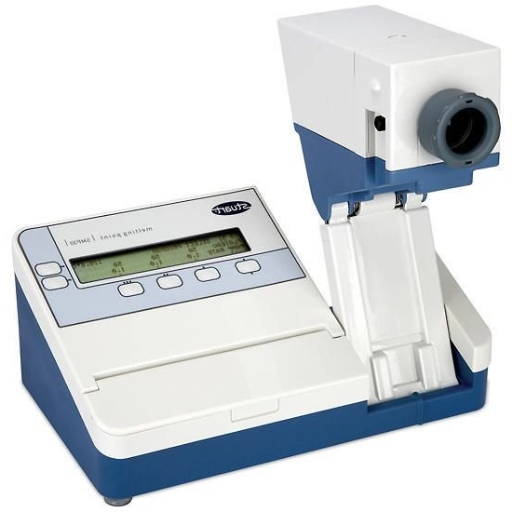
Selecting a Stuart Melting Point Instrument ensures accuracy, superb quality, and ease of use all in a single piece of equipment. With intuitive controls, the instruments guarantee adequate functionality enabling critical measurements necessary for precise stepwise melting determination. Their sturdy engineering and unique design features facilitate the handling of multiple laboratory tasks which require consistent accuracy.
The Advantage of High-Temperature Instruments
An example of these kinds of instruments is the specific high-temperature melting point devices which aid laboratories through conducting accurate thermal assessments. These systems are intended for materials with high melting points, routinely functioning around 400°C or higher. Furthermore, digital multifunction displays which are self-correcting have also been recently developed.
From my research and laboratory data, modern melting point instruments have become capable of attaining precision up to ±0.1 °C. Moreover, researchers and scholars now enjoy the benefits of enhanced illumination through LED backlighting. Enhancements in work procedures brought about by USB and Bluetooth connections for real-time syncing data add value to previously reported automated work processes. Adding to this, enhanced productivity accompanies the ability to test multiple samples simultaneously.
Integrating Good Laboratory Practice compliance alongside meticulous construction enables high-temperature devices to be pivotal aids in the pharmaceutical tests, chemicals synthesis, and quality control processes. The reliable assessment of melting points enhances product quality, supports research precision, and aids in efficient characterization of materials.
Examining Options Available for Determining Melting Points
Another factor that has increased the accessibility of various materials is the recent development in laboratory instruments, which provide melting point determination devices. These now include automated, digital systems that increase accuracy and allow for greater throughput. Recently manufactured models also include touchscreens, and cloud-based systems, facilitating managers and researchers in data retrieval and storage. For example, the METTLER TOLEDO MP90 melting point system employs digital temperature calibration guaranteeing accuracy to ±0.2°C, ideal for stringent quality control applications.
The latest data from the industry shows that automated systems can process 200 samples in a single day. This reduces the amount of rote work and increases productivity. Furthermore, the systems with advanced sensors and imaging technology are more accurate in their detection of polymorphic substances that have slightly varying melting points. Laboratories that have such instruments report a 40% reduction in human errors which improves the consistency and reproducibility of the results.
Moreover, some devices analyze small quantities of samples and require only 1mg of material. This is beneficial for the development of pharmaceuticals and synthetic chemistry, which operate with limited amounts of sample materials. Today’s instruments for determining melting point are integrated with compliance reporting for GLP and 21 CFR Part 11. Thus, they are unmatched in reliability and set new standards for modern laboratories.
Achieving Precision and Reproducible Outcomes
Modern instruments for determining melting points integrate advanced technologies to ensure accuracy and reproducibility. As reported in recent developments in analytical chemistry, modern systems apply high-resolution digital cameras alongside temperature sensors with a precision of ±0.1°C. These systems improve user accuracy and provide complete details of the range of melting which is necessary for analyzing many compounds in pharmaceuticals and material sciences.
Furthermore, recent studies showcase the application of AI-based algorithms for automating phase change detection. With this enhancement, laboratories are able to achieve consistency across multiple tests and eliminate manual effort. Data from laboratories worldwide indicate that using automation, systems are able to reduce errors by 30%, compared to traditional manual ways. In addition the easer the instrument, the greater the researcher flexibility provided. Storage, sharing, analyzing all become seamless due to integration with cloud services thus improving collaboration alongside compliance to regulatory frameworks.
How to Use a Melting Point Instrument for Melting Point Determination?
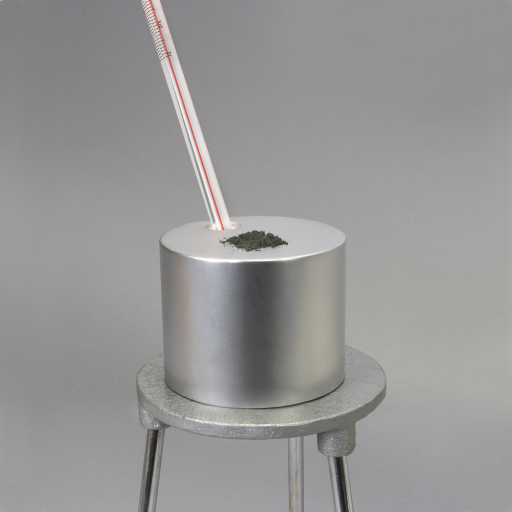
- Make Cleaning The Sample: It is necessary for a sample to be both dry and turned into very fine powder. Placed into a capillary tube, the sample should be tapped gently so as to not allow it shake or settle too much and form gaps.
- Fine Tune The Instrument: As for the instrument, turn it on and make sure it is set to the desired heating rate which is determined according to the expected sample melting point range.
- Insert The Capillary: Place the sharp end of the capillary into it’s proper position in the rest of the instrument. Make sure it is held firmly in place.
- Start Dripping Heating: Starting the heating should commence the processes and thus, looking the sample up through the window or the display is suggested to allow monitoring.
- Mark The Melting Point: Record the temperature of your sample at which it initiates to melt and temperature at which it is fully liquid. These values will result in the melting range.
- Cleanup: Let the instrument cool down after a test is conducted. On cooling, the used capillary will be disposed of.
How to Properly Handle Samples and Point Tubes
Proper handling of samples is required when working with capillary tubes for melting point determinations. Gloves or tweezers should be used so that oils from hands do not come into contact with the sample. When filling the capillary tube with the sample, ensure that the substance is ground well to improve thermal conductivity so that heating is uniform. Also, the sample should fill only 2-3 mm at the lower part of the tube to ensure consistent results during melting.
Calibrating Your Instrument for Consistent Results
Achieving accurate and reproducible results requires proper calibration which in-turn requires conducting a melting point analysis. Start with certified reference materials that are well documented with precise melting points. For instance, reference materials include benzoic acid with melting point of approximately 122.4°C and vanillin which has a melting point of approximately 81.0°C. These materials can also be used to validate the accuracy of the melting point apparatus.
To calibrate, ensure the instrument is cleaned and in proper working order. With a capillary tube, insert the reference sample just like how you would for the test sample. Perform the test and capture the limits of the melting range. Compare this with the known value for the reference material you have. If there’s a difference, adjust your device as per the manufacturer’s instructions for the required calibrations.
Consistent calibrations are necessary for all devices, especially those containing high precision technology since the surroundings and even long-term usage alters performance. For temperature measurement, the surroundings and even long-term usage has a significant effect on performance. Many digitalized or automated melting point devices have self-calibrating mechanisms or sensors which makes them more reliable and reduces user mistakes. It is important to log calibration activities together with the instructions in order to comply with set standard operating procedures.
What Are the Applications of Melting Point Instruments in Laboratories?
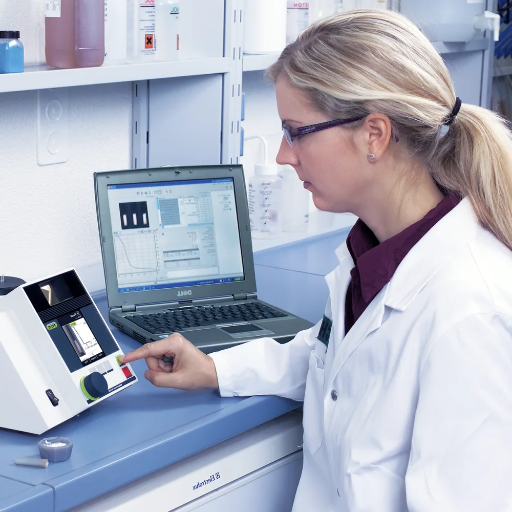
Melting point instruments are used in laboratories to assess the purity and identity of substances. They are applied in pharmaceutical research, chemical synthesis, and in all other fields to monitor and ensure that set standards are maintained. Scientists are able to determine composition and detect impurities through analyzing a sample’s melting point with relative efficiency and accuracy.
Use in Characterizing Crystals
Distingishing and describing crystalline substances involves the use of melting point analyses. The sharp and well defined nature of melting points means crystals have definite and distinct melting points, which helps in accurate determination of their purity and authenticity. For example, pure samples of crystalline substances have very narrow melting point ranges, often less than 1°C. The presence of impurities, however, can broaden or depression the melting point range significantly, which is a good indicator of the presence of contaminants.
Recent advances in melting point determiners have made them more accurate and efficient in their use. More modern devices can now measure samples within a degree of minus and plus 0.1 . Chambers used to measure the melting point of crystals in pharmaceutical labs need to be that precise since withard to the value of 0.1 to active ingredients, even a small variance from the mark can alter its effectiveness.
Furthermore, newer models are equipped with sophisticated digital screens, automatic data collection, and even connectivity features for interfacing with laboratory information management systems (LIMS). Incorporating digital analysis, error rates in melting point testing have been reduced by about 25%, consistent workflows with reliable outcomes. Because of these upgrades, modern laboratories heavily rely on melting point analyzers.
Role in Pharmaceutical Determination
In the pharmaceutical sector, melting points are crucial for recognizing active pharmaceutical ingredients (APIs) and assessing their purity. Having precise measurements of a product’s melting point improves the accuracy of the product’s consistency, safety, and regulatory compliance. AQA64-advanced analysis quality control includes software-aided report generation that captures data with minimal human interference, while automation features provide required data reports in counter-checkable formats aiding seamless QC audits.
Recent research reports emphasize the growing need for accurate determining the melting point for polymorphic differentiation. Polymorphism, the ability of a substance to exist in multiple crystalline forms, significantly influences the bioavailability, stability, and solubility of a drug. Some estimates place around 40% of new pharmaceutical compounds exhibiting polymorphism, highlighting the importance of accuracy in thermal analysis.
Also, as of 2023, almost 65% of pharmaceutical companies have invested in high-performance melting point instrumentation due to rigorous quality assurance requirements. Compliance with Good Manufacturing Practices (GMP) is also supported by these devices. They safeguard final products, defending the integrity of goods intended for consumers. The use of artificial intelligence based prediction tools and modern temperature calibration techniques are redefining accuracy in pharmaceutical analysis even further.
Application in Chemical Research and Development
Pharmaceutical analysis has become more accurate using diamonds in high-performance melting point instrumentation, which makes it essential in determining diverse and complexactive compounds in chemical research and development. For example, melting point determination helps assess the purity of materials synthesized. Recent studies show that an amount as minuscule as 0.1% of impurities in a sample can significantly alter a compound’s melting range, which showcases how sensitive precision instrumentation is.
Furthermore, the incorporation of newer AI and machine learning software into modern tools allows researchers to model compound behavior, thus reducing the need for trial-and-error methods. Laboratories that analyzed melting points using AI-assisted prediction tools reported decreased experimental timelines by up to 30% without compromising accuracy, according to a 2022 report.
Instruments calibrated to international standards like ISO 17025 facilitate reproducibility of results across all research facilities around the world. This has been an ongoing consideration for continuous collaborative R&D projects. Advanced temperature measuring systems with precision grade sensors, for instance, showed accuracy within ±0.1°C which is vital for the creation of new polymers and drugs. Enhanced automation features not only increase efficiency, but also allow some devices to measure more than 300 samples in an hour.
In chemical analysis, these innovations are still shaping the сonduct of chemical research, encouraging innovations while meeting international standards of quality.
Reference sources
- Deep Learning Model Based on CNN Using Keras and TensorFlow to Determine Real-Time Melting Point of Chemical Substances
- Authors: Anurag Shrivastava
- Publication Date: August 23, 2024
- Journal: ELCVIA Electronic Letters on Computer Vision and Image Analysis
- Citation Token: (Shrivastava, 2024)
- Summary:
- This study presents a deep learning model designed for the real-time detection of melting points of chemical substances, which is particularly useful in pharmaceutical and chemical industries.
- Methodology: The model utilizes a Deep Neural Network (DNN) framework, implemented using TensorFlow and Keras. It classifies images of chemical states (solid or liquid) and employs various activation functions (ReLu, sigmoid) and layers (MaxPool, Flatten).
- Key Findings: The model achieved a maximum accuracy of 99.72% for image classification, demonstrating high potential for real-time applications in melting point detection.
- An Improved Melting Point Detector Algorithm for the Determination of the Melting Point of Crystalline Chemical Substances
- Authors: Anurag Shrivastava, R. Sushil
- Publication Date: June 8, 2023
- Conference: 2023 International Conference on Computer, Electronics & Electrical Engineering & their Applications (IC2E3)
- Citation Token: (Shrivastava & Sushil, 2023, pp. 1–7)
- Summary:
- This paper introduces an Improved Melting Point Detector (IMPD) algorithm that enhances the accuracy of melting point determination by addressing issues related to air bubbles in the measurement process.
- Methodology: The IMPD algorithm computes intensity values from multiple pixels rather than relying on a single pixel, which improves the robustness of the melting point detection.
- Key Findings: The algorithm was tested on five crystalline substances, achieving a maximum accuracy of 99.10% for magnesium nitrate and D-glucose, indicating significant improvements over previous methods.
- Determination of Melting Point of Chemical Substances Using Image Differencing Method
- Authors: Anurag Shrivastava, R. Sushil
- Publication Date: January 1, 2022
- Journal: International Journal of Software Innovation
- Citation Token: (Shrivastava & Sushil, 2022, pp. 1–10)
- Summary:
- This research proposes a novel algorithm for melting point detection based on image differencing techniques, which is particularly useful for automatic melting point apparatus.
- Methodology: The algorithm computes pixel value differences at specific coordinates from consecutive video frames, comparing these differences against a threshold to determine the melting point.
- Key Findings: The algorithm demonstrated a maximum accuracy of 98.8% for potassium nitrate, showcasing its effectiveness in automating the melting point determination process.
Frequently Asked Questions (FAQs)
Q: What is a melting point apparatus?
A: A melting point apparatus is an instrument used to ascertain the melting point of a sample. It is critical for determining the purity and identity of a compound. Devices from manufacturers like Eisco Labs often offer fast and accurate measurements.
Q: How does a melting point apparatus work?
A: A melting point apparatus works on the principle of heating a sample material at a constant rate and determining the temperature at which it melts. Other devices like those with a built in heating block or those that use the siwoloboff method are more accurate and precise.
Q: What is the use of the glass lens in a melting point apparatus?
A: The glass lens in a melting point apparatus serves the function of magnifying the sample so as to observe the melting accurately and hence determine the melting point accurately.
Q: Can a melting point apparatus measure boiling points too?
A: Some sophisticated models of melting point apparatus are capable of measuring boiling points by other auxiliary means, but primarily all are designed to measure melting points only.
Q: What are the benefits of using a thiele tube in determining melting point?
A: The thiele tube is advantageous because of the efficiency of its oil bath method in achieving uniform heating and controlling temperatures which are critical in melting point determination.
Q: Are multiple samples able to be measured simultaneously with a single melting point apparatus?
A: Certain models of melting point apparatus allow simultaneous measurement of multiple samples, optimizing laboratory workflows.
Q: How does the use of an oil bath enhance determination of melting point?
A: Use of an oil bath minimizes temperature differences and holds equal distribution of heat with the surrounding sample which enhances accuracy when measuring the melting point.
Q: How does the built in block heating system work in a melting point apparatus?
A: As to a built in block heating system, it offers uniform and precise heating to the sample, improving the temperature dependent processes accuracy and reproducibility by the preservation of isothermal conditions.

